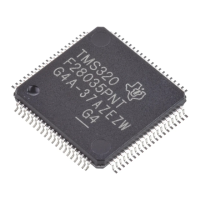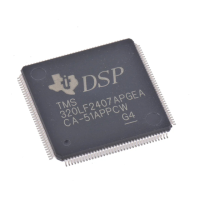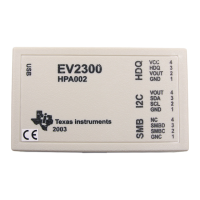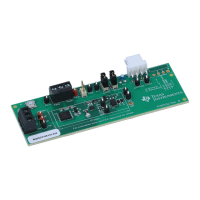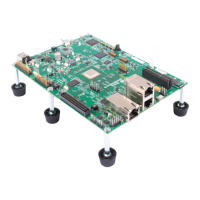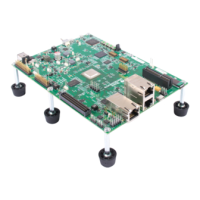Invocation
and
Operation
of
the
TMS34010
C
Compiler
*
An example:
**********************************************
* AS -
EXPRESSION
FREE
*
* A7 - USER VARIABLE
FREE
SYMBOL;
-ABC
*
* A9 - USER
REGISTER
USED *
**********************************************
Instructs
GSP.CG
to
generate code
which
runs on certain preproduction
units
of
the TMS3401
O.
This option
is
not
needed when compiling code
·for production units
of
the TMS3401
O.
Certain instructions
not
available
in preproduction units
are
not
used when this
option
is
invoked.
3.3.3
Input
Requirements
GSPCG
input
must
be
the intermediate file produced by the parser. The
out-
put'of
the parser
is
fed,
without
modification, directly to the GSPCG.
3.3.4
GSPCG
Output
GSPCG converts the intermediate file generated
by
the parser into assembly
lanQuage
source code suitable for
input
to
the assembler
or
for
modification
with
a text editor. This code
is
reentrant, relocatable, and can
be
stored in
ROM.
3.4
Batch Execution
of
the
C
Compiler
3-6
The C compiler package contains the batch file GSPC.BAT,
which
executes
the three phases
of
the compiler and the assembler. This batch file
is
invoked
as
follows:
where:
input
file
Example:
is
the name
of
the C source file. The default extension
of
this
file
is
.c. A prompt appears
if
no file name
is
given.
.9.2E.£
PROGRAM
This example uses PROGRAM.C
as
the C source file and generates PRO-
GRAM.ASM
as
the assembly file and PROGRAM.OBJ
as
the object file.
PROGRAM.OBJ
can be used
as
input
to
the linker, GSPLNK.
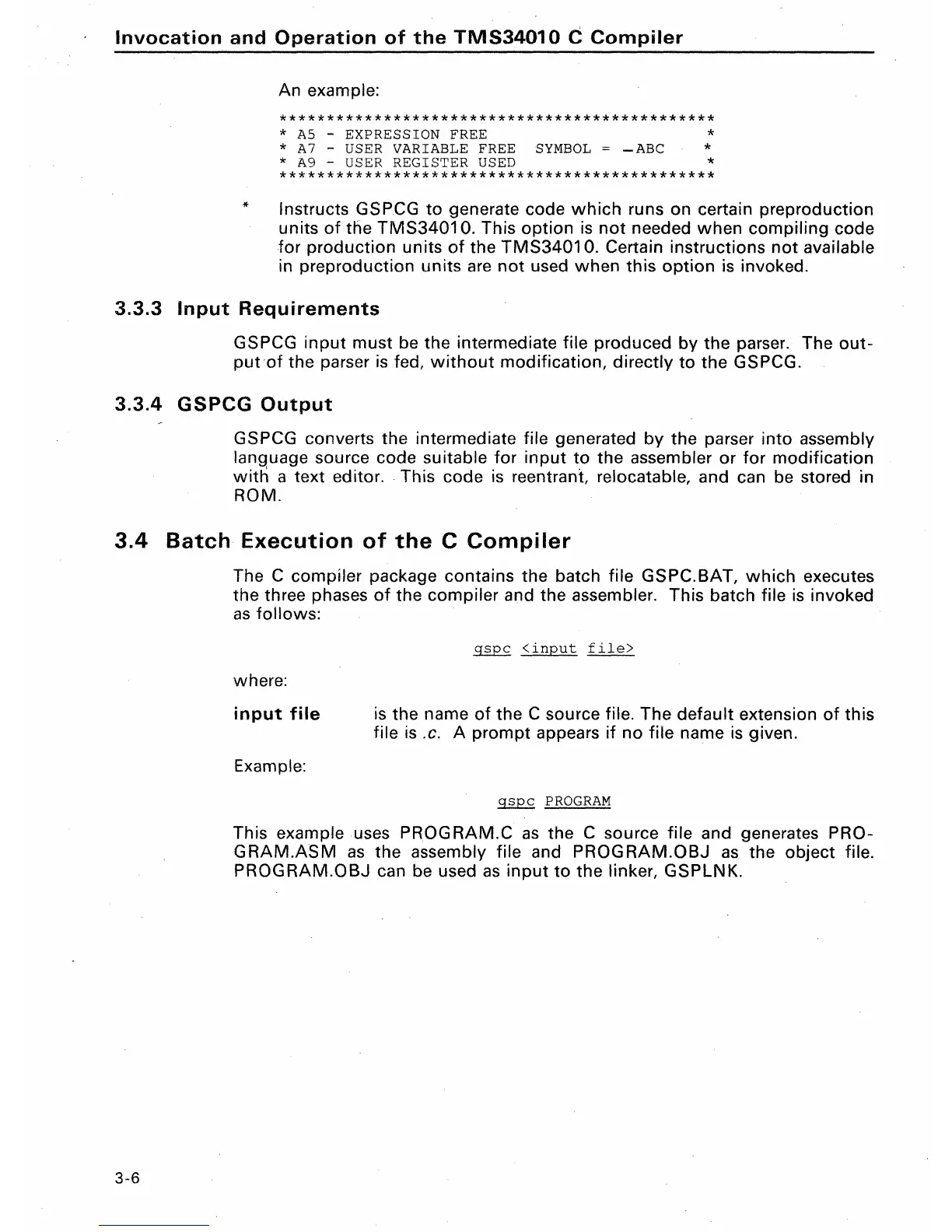